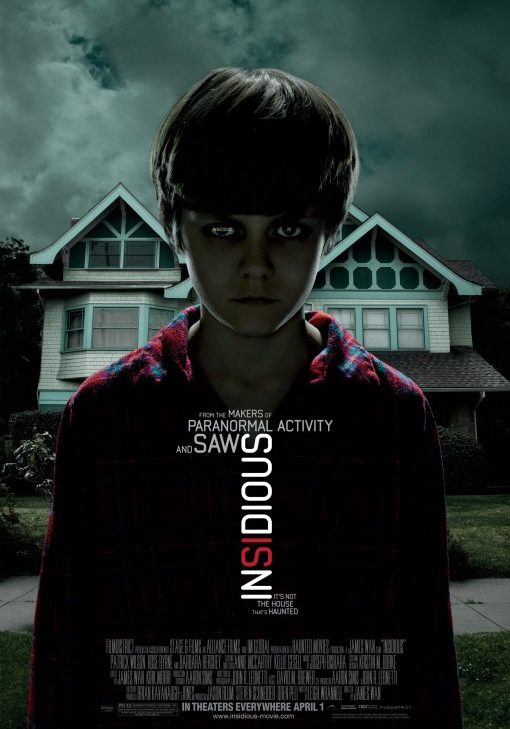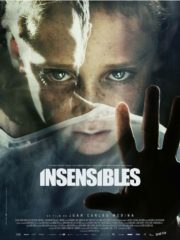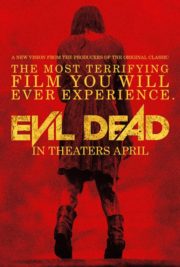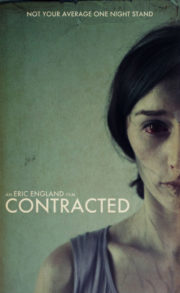The Haunting Silence: An In-Depth Look at “Insidious”
“It’s not the house that’s haunted… it’s your son.” This chilling line from the 2010 horror sensation Insidious perfectly encapsulates the creeping dread that director James Wan masterfully conjures throughout the film. Insidious, a film teetering between the realms of the living and the beyond, thrusts its audience into the haunted life of the Lambert family, whose son falls into a mysterious coma and becomes a vessel for spirits from an astral dimension called The Further.
A Symphony of Whispers: Crafting the Atmosphere of Fear
James Wan, known for his craft in the horror genre, builds an ominous atmosphere in Insidious that is as subtle as it is unsettling. Rather than relying on gory visuals, Wan plays the audience like a fiddle with suspense and a sense of foreboding that permeates every scene. The brilliance lies not in what is seen, but what is suggested; shadows linger and the stillness of the frame often feels like the calm before a storm. Wan’s approach to tension is surgical, incising fear with precision, utilizing the quiet before the cacophony of scares.
Cinematic Nightmares: The Role of Visuals and Sound
The film’s cinematography is a character in its own right. Stark lighting contrasts with engulfing shadows create an interplay between the known and the unknowable. The camera angles often suggest a voyeuristic presence, an unseen spectator, heightening the viewer’s feeling of intrusion into a private haunting. The film’s commitment to practical effects over CGI lends an authenticity to The Further that digital effects might have cheapened.
Sound in Insidious is a beast of burden, carrying much of the weight of the terror. The use of strings in the soundtrack jars against the silence, creeping into the psyche—almost a warning of the approaching fear. Moments of stillness are masterful, allowing the viewer’s own heartbeat to become part of the film’s score. Sound effects, from the creaking of doors to the whispers of the unseen, work in harmony to terrify, often anticipating a fear that sometimes, doesn’t come. This audiovisual concoction is a prime example of horror that is felt and not just seen.
The Humanity Amidst the Horror: Character and Performance
At the core of Insidious are performances that elevate the story from a simple ghost tale to a deeply emotional narrative. Patrick Wilson and Rose Byrne deliver credible portrayals of parents grasping for normalcy in a situation that defies all logic. Their genuine reactions tether us to reality and their terror becomes our own. The horror is not just in the supernatural events, but in the helplessness we feel alongside the characters. Their humanity is our anchor in the storm of fear, and it is their believability that makes the horror personal and all the more real.
Fear Beyond the Veil: Horror Genre Conventions and Innovations
Insidious defies and defines horror genre conventions by blending the supernatural with the psychological. It does not merely present a haunted house story but delves into the terror of the unknown aspects of the human soul. Unlike films that capitalize on gore, Insidious uses a subtler palette of frights, relying on the tension of anticipation and the shock of the uncanny. It’s not just about the jump scares—it’s the fear of what might be lurking around the corner or hovering just out of sight.
The film interrogates themes of familial bonds, the vulnerability of children, and the desperation that comes with attempting to protect those we love from forces beyond our comprehension. These underlying societal concerns add depth to the film, making the horror a byproduct of familial love as much as the fear of the supernatural.
When evaluating the effectiveness of Insidious as a horror movie, one finds it both innovative and reflective. It has inspired a number of sequels and set a precedent for mainstream horror, successfully toeing the line between accessibility and the macabre. Its innovations in visual and aural storytelling continue to influence horror filmmakers today.
A Fright for Everyone?
While hardcore horror aficionados may find some elements familiar, casual viewers will discover a wealth of scares. The demographic appeal of Insidious seems broad—yet, those with a particular sensitivity to supernatural themes or children in peril might want to take caution. As compared to contemporary films, Insidious stands as a monumental nod to both classic paranormal narratives and modern horror sensibilities.
To Cross or Not to Cross: The Final Verdict on “Insidious”
In summation, the strengths of Insidious lie in its keen understanding of atmosphere, bolstered by strong performances and a respect for both horror conventions and the audience’s imagination. It may tread on familiar ground, but it does so with such confidence and craft that it hardly seems to matter. Minor weaknesses may include the occasionally predictable plot points and the familiarity of some of its concepts within the horror genre.
The film is recommended for viewers seeking a horror experience that clings to the psyche long after the screen goes dark. However, for those particularly triggered by themes of child endangerment or intense supernatural content, discretion is advised. Overall, Insidious has marked its territory in the hallowed halls of horror and stands, quite effectively, as one of the bright dark lights of its genre.




